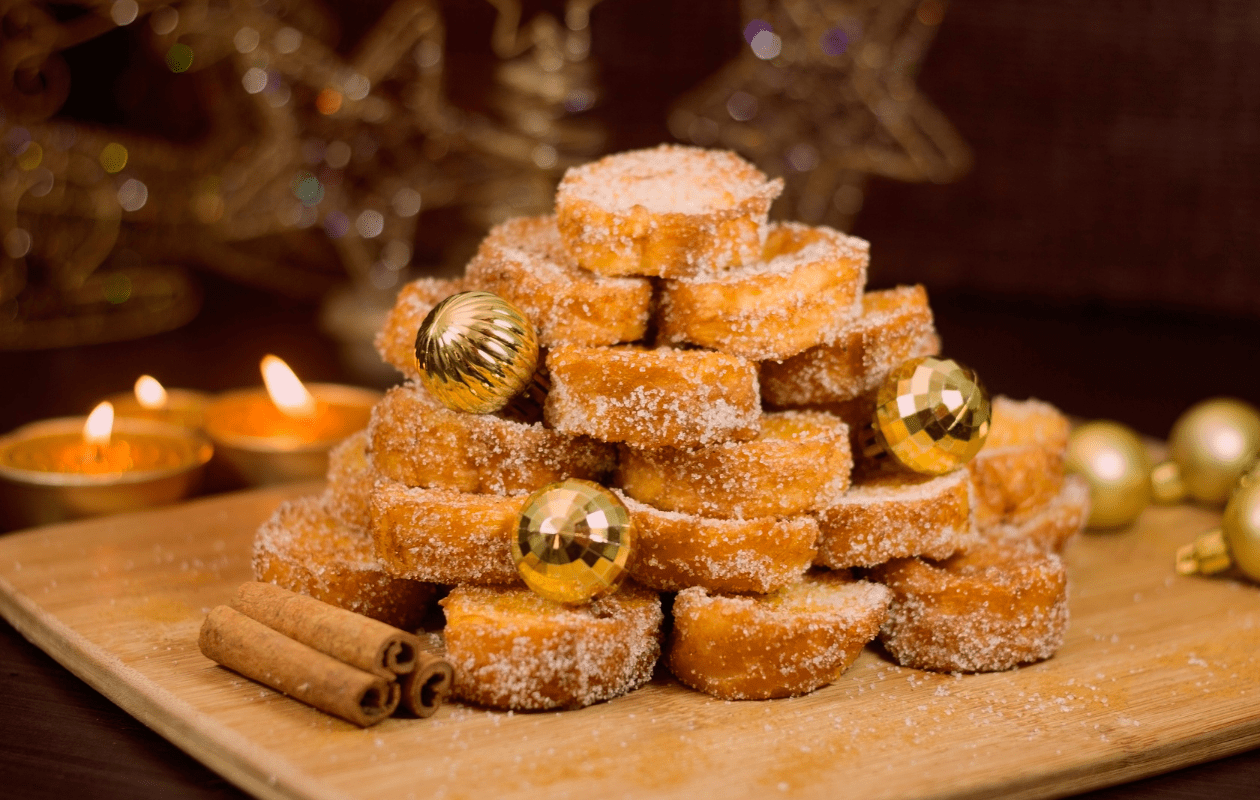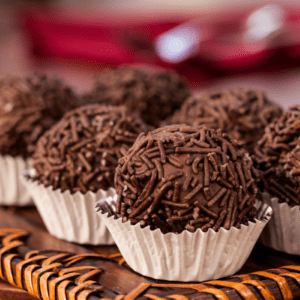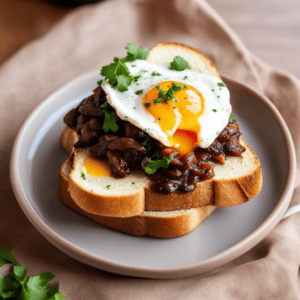Rabanada
Table of Contents
Brazilian French Toast
Rabanada is a deep fried version of French toast that is traditionally served at Christmas in Brazil. That being said, there is certainly nothing wrong with enjoying it year round! Crusty baguette is soaked in a sweet custard, deep fried in oil, then rolled in cinnamon sugar. Trust us, no syrup is necessary for this delectable treat. Rabanada can also be eaten any time of day. In Brazil, it is not necessarily a breakfast item, but more often acts as a dessert treat on special occasions.
Rabanada from Portugal
Rabanada has its origins in medieval Portugal. The recipe was both a way to abstain from meat during lent and also to make use of stale bread. Portuguese colonists brought the recipe with them to Brazil, where it became a staple item on the Christmas table. Rabanada is traditionally eaten as a dessert, often paired with a small glass of port wine.
The earliest versions of rabanada were likely made with fresh milk in place of sweetened, condensed milk. There are versions of rabanada from all over the world, with the oldest known reference dating back to 1 BCE. A Roman recipe for aliter dulcia (“another sweet dish”) instructs the cook to soak bread in milk and beaten eggs, fry in oil, and drizzle with honey.
The most famous version is, of course, French toast, which is known as pain perdu in France. This translates to “lost bread,” which is a nod to the usefulness of the recipe in preserving bread that would have otherwise been “lost” due to staleness.
In many Balkan countries, prženice is a version of rabanada that can be sweet or savory. You can find the dish served with various meats and cheeses, as well as fruit preserves and ajvar, a condiment made from peppers and eggplant.
Rabanada vs American French Toast
Rabanada has a few significant differences when compared to American French toast. The first is the type of bread used. American French toast favors thick sliced, soft white bread, such as challa, sourdough, or brioche. Most recipes agree it is best to use bread that is at least one day old. Rabanada uses crusty French bread or baguette that has also been out for no more than 24 hours. Using a baguette is preferable since the slices are smaller, making them more manageable for the fryer.
The custard of rabanada is also different. American French toast uses a mixture of eggs, sugar/honey, cream or milk, and perhaps some cinnamon or nutmeg. Rabanada adds sweetened condensed milk to the custard for an even more decadent taste and creamier inner texture. The mixture is warmed over medium heat, and the eggs are kept separate, used only to briefly coat the bread before deep frying.
American French toast is usually pan fried in butter or oil, then served with maple syrup or preserves. By contrast, rabanada is deep fried in oil, then rolled in cinnamon and sugar. You can drizzle honey on it if you desire, but it is plenty sweet on its own.
Rabanada Recipe
Ingredients:
1 loaf of day-old baguette (white, wheat, or sourdough), cut into one-inch slices
3 cups of milk or cream
3 large eggs
2 tablespoons vanilla extract or port wine
½ tsp salt
2 cinnamon sticks
½ cup sweetened condensed milk
Vegetable oil for frying
For the Rabanada Coating:
1 cup of granulated sugar
1.5 tablespoons ground cinnamon
Directions:
- In a small saucepan, whisk together the milk or cream, salt, condensed milk, and cinnamon sticks.
- Heat the mixture over medium low heat until you reach a simmer. Then remove it from the heat and allow it to cool. When it is cool, remove the cinnamon sticks and add the port or vanilla extract.
- In a bowl, whisk the eggs together.
- Heat the oil in a deep fryer or large pot to a temperature of 365 degrees fahrenheit.
- Prepare a plate or bowl with your mixture of cinnamon and sugar.
- Soak the slices of bread in the milk mixture for a few seconds on each side. Then coat each slice in the egg mixture.
- Fry the sliced rabanada bread in the hot oil until golden brown. Roll each piece in the cinnamon sugar, then transfer to a wire wrack or a tray lined with parchment. Serve immediately with hot coffee or a glass of port.
More Great Brazilian Recipes to Try:
- Bauru de Forno (Brazilian Croque Monsieur)
- Cornstarch Cookies (Sequilhos)
- Pave (No Bake Vanilla Cake)





